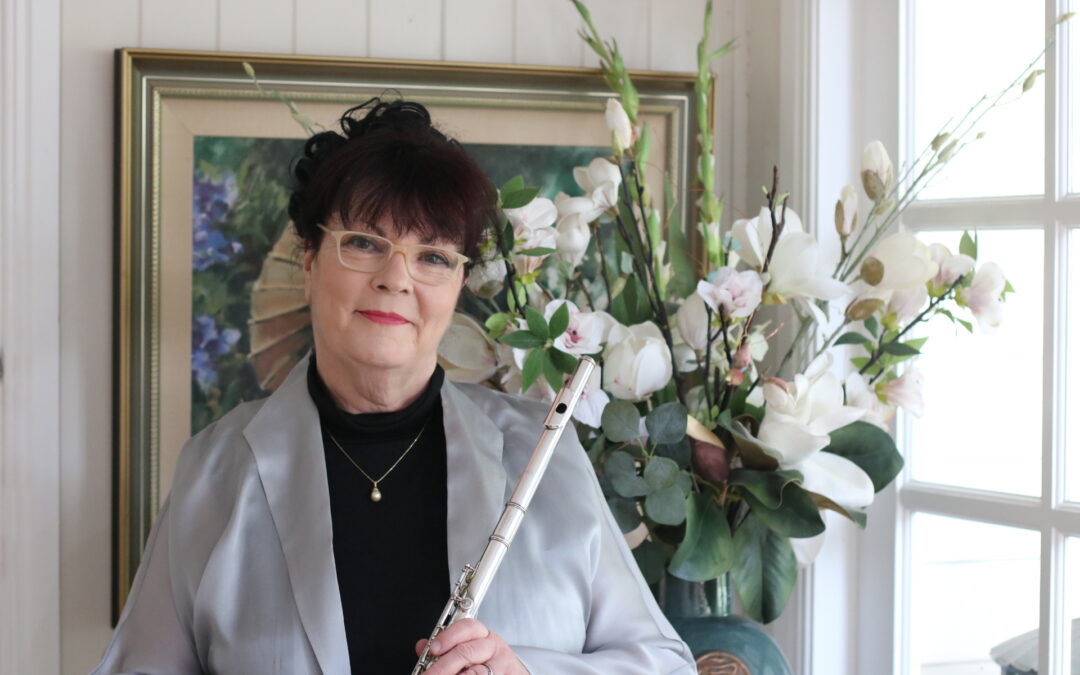Tone Development Through Interpretation by Marcel Moyse is one of the greatest legacies he has left us. It is mainly a result of his time in America and travels with Blanche Honneger and Dame Nellie Melba which cemented his passion for the sound and virtues of other instruments namely the voice but also strings. He spent a lot of time travelling around with them and used to listen to Dame Nellie Melba warming up in the carriage next door on the train, inspiring De la Sonorite. The nuance that the voice brings to colour, phrasing and expression ignited a passion in him for his own playing and also teaching. “If the singers and the strings can do it, why can’t we?” – Moyse famous quote.
What is Tone Development Through Interpretation? A map to refinement, great interpretation, artistry, and control on the flute. With everything Moyse produced, there is more than meets the eye to his message. Because we as players spend a lot of time playing studies there is a tendency to develop a style that just plays the notes. Tone Development will balance out that tendency and encourage more musical, thoughtful study performance.
For me this book’s message is to encourage us to play melodies- everything one can get our hands on, they will lead you to your voice and give a pathway to artistry. A unique tone, voice, and style.
The book is a series of arias and extracts ordered into registers to develop the players tone and expression. The majority of the extracts in the book are opera arias which opens the magical door into the wonderful world of storytelling (operas are stories), colour, nuance and joining the flute and voice together. This is where discovering storytelling and vocalisation happened for me.
Understanding the context of the extract makes a huge difference to the interpretation and ability to tell a story with expression and finesse. The book encourages singing and stepping outside the flute parameter into opera or another context has been chosen to practice. Put on a different musical hat with each extract. Ask yourself: What am I trying to say musically? What story am I telling? Practicing these extracts changed my tone and interpretive approach for the better.
Finding one’s voice as an artist through this book and the Melodious Studies encourages the player to play any melody, the more the merrier, anything and everything to find their own unique voice as an artist. It led me to vocalisations because of course arias have words giving insight into subtle expression and musical flexibility in a phrase. Once this door is opened it just keeps giving and continuing for the players development musically. Every melody will have something to offer and learn from for example, “Flowers” by Miley Cyrus’ a personal expression by her from a deep emotional well within.
Words are wonderful things; they open up space and shape in the mouth for tone and expression and give us expressive insight into interpretation. Singers are able to get so much nuance and elasticity into their expression. I am reminded of a great quote:
“We all have the same 12 notes to work with. It’s how we put those notes together, the space between them, and the passion we put behind them that makes our own unique music.”
This encourages flute players to explore this elasticity, nuance, control, finesse, and elegance. This is a game changer for the player as it manifests itself into flute repertoire so easily.
Tone Development and the Melodious Studies can be the foundations of flute playing and laying a solid grounding for the player as an artist. Artistry can be elusive in interpretation and needs to be worked on constantly.
For example, my teacher focused while I was studying No 6. on every note being just so. The demi’s and semiquavers in the dotted rhythm had to be forward tongued, the staccatos exact and resonant, some were forward tongued, some not, and of course it had to sing and have musical magic. Such a simple little melody but a life changing experience. The message sent to me is the devil is in the detail and controlled focus delivers refinement and a subtlety in expression. Dotted rhythms can sound childlike in their delivery if the rhythm is not handled clearly. This extract deals with that very effectively.
Guide to Tone Development Through Interpretation No. 6 by Eileen Gilligan
Tone Development Through Interpretation No. 6 by Marcel Moyse
Tone Development Through Interpretation No. 6 Audio File
Rare Recording of Marcel Moyse
One of the few extracts we have of Moyse playing from his work is here for reference material. This is an excellent extract and reference recording for maintaining expression and intensity in a phrase. This kind of tone and beauty of expression is so Moyse, nothing quite like his emotion, intensity, and ability to carry it through a phrase without wavering on any note. Apply this tone and emotional intensity to the fourth movement of the Reinecke Flute Sonata will help you capture the passion and intensity required by the composer.
Tone Development Through Interpretation No. 18
Number 24 is an example of words aiding expression and tone notably for the low register and presents an opportunity to explore the wonderful Moyse bell tones. The recording below has the score and words to it to aid the players interpretation and practice. It is not enough to listen to the recording and then play the extract more will be gained by singing it, understanding its context, and immersing oneself in the moment and story. This affects tone and everything for the better. The book can give a sophistication that the player didn’t have before, it makes them think, listen, and have empathy. Sometimes the player has to put themselves in the part of what they are playing to really capture the moment and essence of the music. For example, at the conclusion of the fourth movement of the Reinecke Flute Sonata it is very difficult to capture tonally, the emptiness she felt without empathy.
No 24 Tu che a dio speigasti l’ali- Giuseppe Di Steffano , beloved by Italians.
Perfect example of elasticity in phrasing and space between notes.
Tone Development Number 24. Eileen Gilligan playing number 24.
Tone Development Through Interpretation No. 24
Maria Callas – Lucia Di Lammermoor complete. For educational purposes she is one in a million to be inspired by. Her finesse and sophistication are something I listen to closely.
There are some technical aspects of this book that should be noted. On a technical side the book explores key colour and transposition, control of the air stream: both air speed and air direction. The back of the book focuses on air direction – down- up in various forms. From the low register exercises that are designed to develop sounding like two flutes to exercise E1234 which is a big test of air speed, air direction and flexibility. All these are on the website with guides.
A melody example of this is number 47. The melody needs to sing with the lower notes sounding like another voice.


Recent Comments